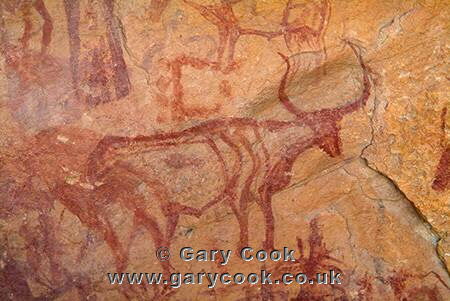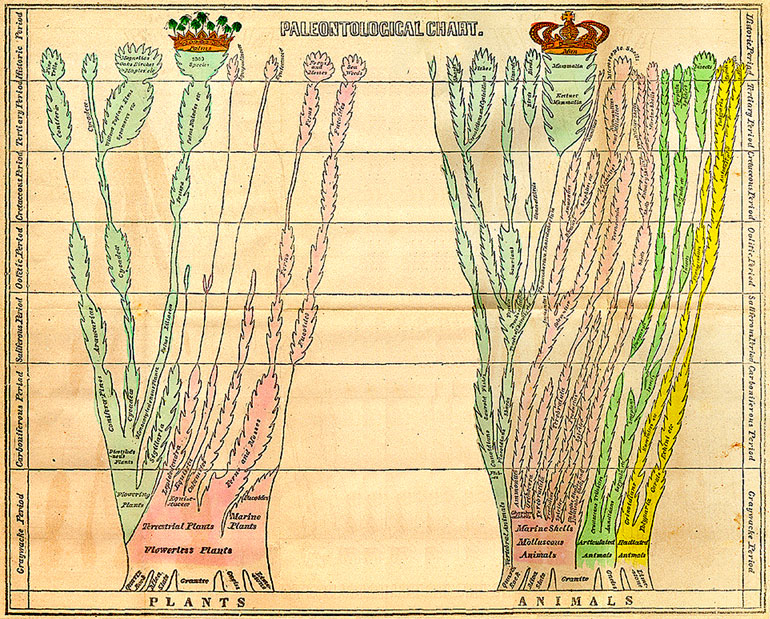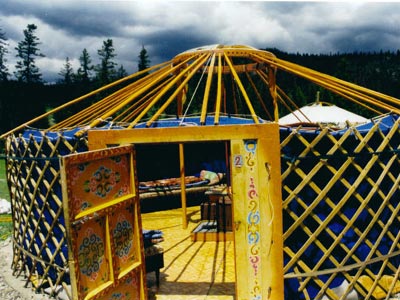This is a sister post to the previous (Where Does Land Come From?) You were expecting maybe another Right? They are inseparable as the notion of available land is intimately linked to the number of people who wish to use it.
(No date provided.)
[Still] not ready to address the matter of Australia's ideal population. (I like children and migrants, economic or otherwise.) However, I am interested in the subject of what is a desirable level of population density.
This discussion may help, with a few facts.
The overall density of earth's population in (2011)
was
54 people per square kilometer
(0.54 per hectare).
was
54 people per square kilometer
(0.54 per hectare).
This excludes Antarctica.
Total land area being 130 million square kilometers
(13 billion hectares).
And the earth's population reached 7 billion in 2011.
(13 billion hectares).
And the earth's population reached 7 billion in 2011.
to space as a biological, territorial imperative.
Upper red square indicates our biological range;
lower one is our actual amount of personal space.
Viewing us as another biological creature
(all other species do not rely on fossil
fuel for their energy), we need 4 square kilometers
per individual. This only means, as animals, there
should be 32.5 million of us! Our current
world population speaks very well for our social skills
[and resourcefulness] in that case.
From objective census figures, Australia's population lives
mostly (about 85%) within 50 km of the shoreline. Is this figure increasing or not?
It seems to be, percentage-wise and relative to the rest of the continent.
(Most of the growth is in capital cities, and these tend to be coastal!)
That may be the normal
human instinct to flee drought and seek water – which is where
human civilisations have always positioned themselves. [But it may be
something else too.] In Australia, the move toward water does not
correlate with a move toward increased food production. Because most
of our food (animal and vegetable) is produced in the drier more
rural (aka regional) areas.
And these are the areas that are growing in population more slowly or not at all (even in reverse – losing in numbers). And ageing, because younger people are leaving and older people are moving in.
And these are the areas that are growing in population more slowly or not at all (even in reverse – losing in numbers). And ageing, because younger people are leaving and older people are moving in.
[Ref article from link in previous post.]
Here we have the most
urbanised and arguably beach-obsessed nation on earth. In all
fairness, new arrivals to any country do tend to settle in cities –
migrants of all stripes go there for social, cultural and economic
reasons – not wishing to venture forth into less-inhabited
regions. [Shows what a new country we are.] In our history,
emancipists (newly freed convicts who'd completed their prison terms)
were given land to live on. But farming proved – either because
the terrain was too unfamiliar, or they lacked the skills in the
first place – too difficult leading to episodes of near starvation.
This opened the door to
others who wished to buy them out (engaging in land speculation from the early days of the fledgling colony), and of course the the
former “farmers” had nowhere to go but to the cities (or city) to
seek their fame and fortune.
Note close relationship with Australia's population map (top of post).
The problem with arid places isn't just lack of water.
It's lack of trees/vegetation.
How do we then
demonstrate the possibility of living in less populated, more arid, often semi-fertile areas and [the possibility of] producing food
simultaneously with a satisfying level of culture and social
interaction and economic (!) sustenance? (!)
Here we have some people who are part of the solution.
[Links to a short video, and similar videos.]
You can also read about them here, with related articles.
Mongolian couple turns desert into oasis.
EARTH VISION The 10th Tokyo Global Environmental Film Festival@ featured,
China/18min./2001
"over the last 28 years
the couple have planted over 600,000 trees,
covering 1,600 hectares."
the couple have planted over 600,000 trees,
covering 1,600 hectares."
(They started in 1985.)
My belief is that
mass-consciousness level decision-making can only really occur one
individual choice at a time.
There may be more
numerous opportunities to own land and fulfil the dream of lower
density, lower impact, stress-free lifestyle away from cities – in
precisely those same regional, marginally fertile and less
well-watered areas of the continent!
That are being deserted,
abandoned.
Earth ships, invented by Michael Reynolds
(as seen in the Garbage Warrior film) are designed
to cope with desert condition. That means extremes of
hot and cold and very little water. They can grow food
inside them in specially engineered biological cells
[wastewater recycling compartments].
The real key will be
the social factor. For although individuals must make their own
choice, we still need the support of groups and families to
embolden us when it comes to massive shifts in our lifestyle and
consciousness. Some one needs to go (and create!) first. [Again, see Chris Cole post.]
Did I mention that earth ships are built from old tires?
(And check out their earth ship photos,
you can feel the warmth inside and snow outside.)
We are challenged to
re-invent society, creating those things – traditions, institutions
and cultures that we would like to see (in the world, our lives) that
don't already exist for our benefit. We need to create! We need to
be the creators of this. It will not be done for us by various
levels of government, but it will be done by us.
Members of government can follow, themselves benefiting in equal measure.
 Dig. The desert.
Dig. The desert.
Members of government can follow, themselves benefiting in equal measure.
 Dig. The desert.
Dig. The desert.
(site has very interesting links) is well-placed
in Geraldton, WA, Australia
in Geraldton, WA, Australia
to re-invent our culture in an arid climate.
"Dryland regions cover over a third
of the world's land surface and home to
over 2 billion people, mostly in developing countries."
of the world's land surface and home to
over 2 billion people, mostly in developing countries."
Back to population.
It is also my conviction that once a goodly portion of society has seen and aspires to the benefits of a lower density, non-urban lifestyle – it will be obvious and clear what levels of population can be sustained.
It is also my conviction that once a goodly portion of society has seen and aspires to the benefits of a lower density, non-urban lifestyle – it will be obvious and clear what levels of population can be sustained.
(Copyrighted artwork by Karim Nafatni, visible here.)
Urban Octopus
Human ingenuity truly
know no bounds. After all, have not people inhabited the Middle East and Northern Africa (MENA) for millennia. Question is, was their land always the way it is now..

Libya, Sahara Desert.
When it comes to family
size, this is also an individual (really couples) level
decision/choice. From the point of view that society has
now an average of 2.5 people per household –
and we imagine 100 households per settlement, that gives 250 people
as a target for the desirable maximum of people who will live in close
proximity to one another and (possibly) interact with each other on a
daily basis.
(100- 250)
[Refers to Dunbar's Number.]
Gallup poll, USA.
From a balanced
perspective, therefore, each family of 5 would need to be matched
with an empty block or domain of 1 to 3 hectares (0 size household)
to keep the average at 2.5.
5
0
And a single-person
household would thus balance a family of 4, and a couple or single
parent with one child would balance a family of 3. (3 obviously a couple
with one child or single parent with two.)
4 3
1 2
To carry this further,
look at large families. Take two with 7 and 8 (total 15 souls). This requires 4 empty hectare blocks (just as 9 and 6 together do) to
average 2.5 people per block. And a family of 10 needs 3 empty
blocks to balance it.
8 9 10
7 6 0
0 0 0
0 0 0
0 0
0 0
8 9 10
7 6 0
0 0 0
0 0 0
0 0
0 0
We are not even
projecting human life-span (likely to increase when a healthy
lifestyle prevails, as may a desire for more offspring). But climate
(and earth) changes that we are all familiar with are likely to put a
natural ceiling on this. (Nature has ways of handling us when we
cannot manage ourselves!)

Nature – our current terrestrial
support system –
something I believe we can interact with, and that
we'll eventually come to a mutually beneficial
understanding with
each other.

We are also not
projecting that those from large families (by my observation) are
more likely to go on to produce large families themselves.
[Interestingly, rural families today have larger families, but
generally shorter life-spans.] There needs to be some sort of logic
that works with instinct in our society to ensure we do not grow
exponentially – and beyond our natural limit (carrying capacity). It has been seen that humans (as other life forms) tend to fill up
available space.


Population, the elephant in the room.
Does that mean that
cities are life forms – (perhaps death form would be a better
choice of words) – that sprawl as far as they can, devouring farm
land, pushing farming families further into less arable areas as they
go?


4,200 acre farm in Tennessee, USA.
We are here. We exist.
The earth is here and it exists. We exist on the earth; it is ours
and belongs to us. The notion that it does not, and that we must pay
to take up space in our own home land is, well, preposterous.
Dialling back their judgement – as I have not –
I feel future versions of ourselves will come to see our [land ownership]
practices as outdated, unhelpful and this position
[lack of real ownership] as untenable
and not in any one's ultimate interest.

We are not dealing in absolute numbers [of people].
It is more about the relationship between how many people
there are and the amount of land
that can be successfully utilised.
That and quality, rather than quantity of human life.





















No comments:
Post a Comment